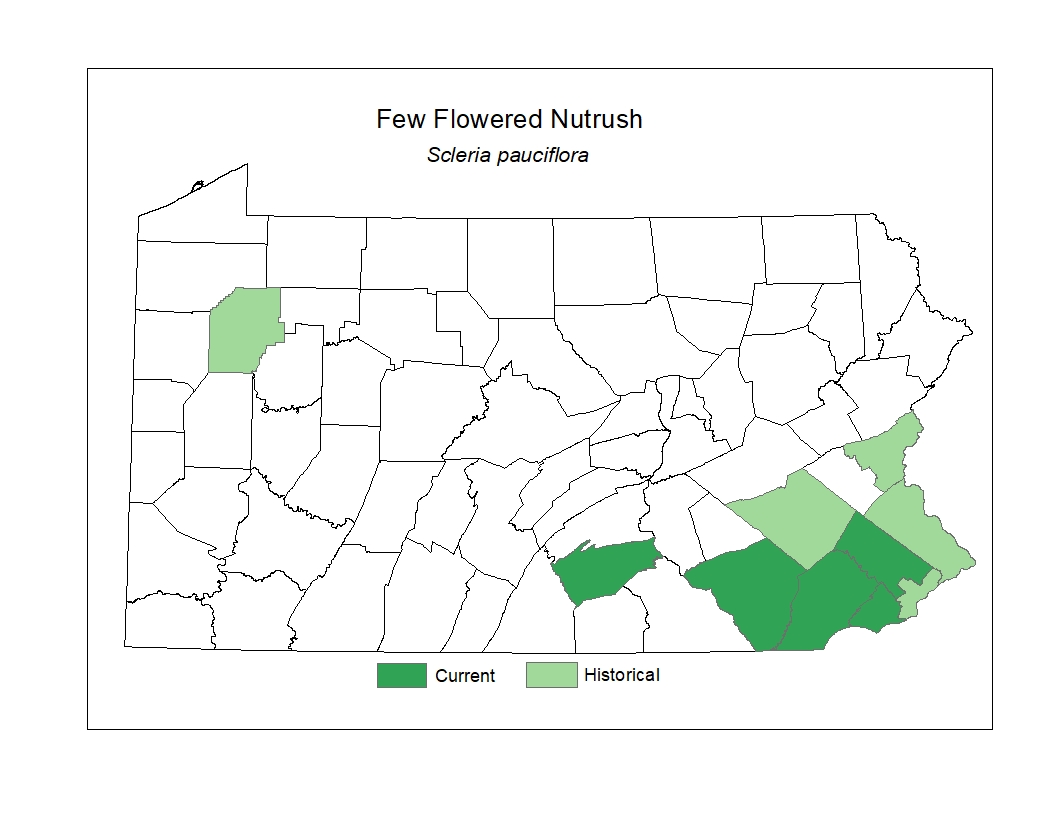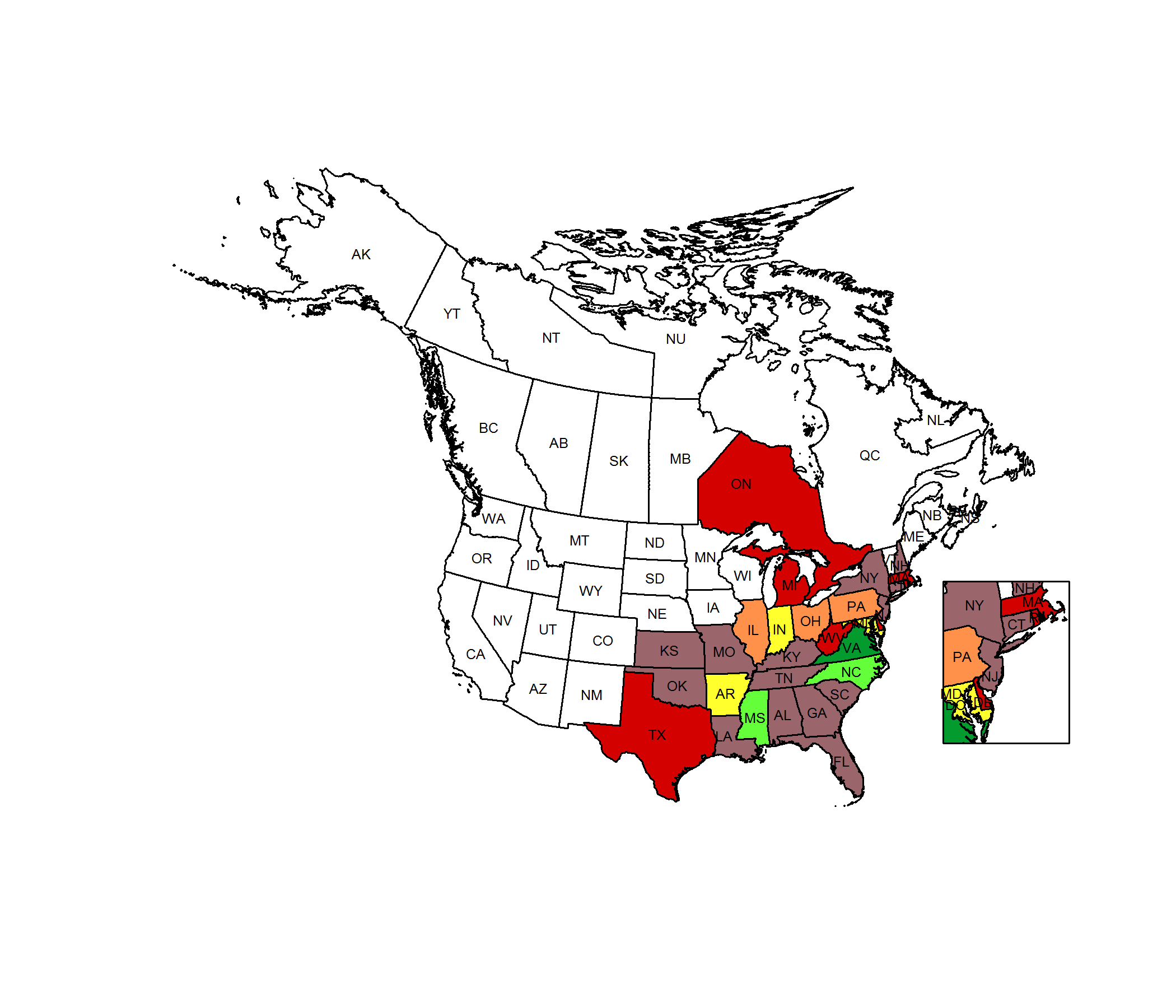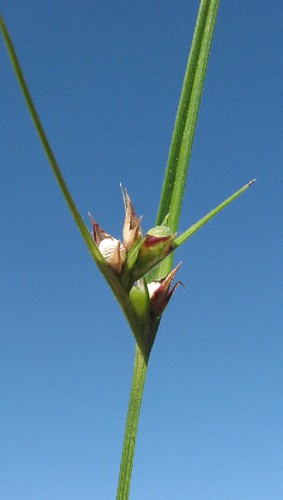 Species Factsheets
Species Factsheets
Scleria pauciflora
Few-flowered Nutrush
State Status: Pennsylvania Threatened (PT)
PBS Status: Pennsylvania Threatened (PT)
Federal Status:
Global Rank: G5
![]() rank interpretation
rank interpretation
State Rank: S2
Description
Few-flowered nutrush (Scleria pauciflora) is a perennial herb with triangular, tufted stems that grow from 20-50cm. The leaves are alternately arranged, linear, elongate, variably hairy, and up to 3mm wide. The flowers, appearing from June to September, are minute, unisexual, and are grouped in clustered spikelets at the top of the stem. The fruits are less than 1.5-2mm long, but have a curious appearance in being hard and white (similar to a piece of bone or tooth), globe-shaped with a short-pointed tip, warty on the surface, and having a basal “platform” of six tuberlike structures.
Rank Justification
Imperiled in the nation or state because of rarity due to very restricted range, very few populations (often 20 or fewer), steep declines, or other factors making it very vulnerable to extirpation from the nation or state.
PABS
The PA Biological Survey (PABS) considers few-flowered nutrush to be a species of special concern, based on the relatively few occurrences that have been recently confirmed and its specialized serpentine habitat. It has a PA legal rarity status and a PABS suggested rarity status of Threatened. About fifteen populations are currently known from the state.
Habitat
It grows on serpentine barrens.
Survey Dates
Fruits June - September
Distribution
In Pennsylvania, it has been documented historically mostly in the southeastern counties

Threats
Quarrying and habitat loss are threats in some locations.
Management
The viability of populations of few-flowered nutrush and its serpentine habitat will require maintaining early successional conditions and controlling invasive species. Active management, through the use of fire, scraping the substrate, or mowing, may be needed to create the proper successional stage and ecological conditions for this species to thrive.
Conservation Status Map


NatureServe. 2017. NatureServe Explorer: An online encyclopedia of life [web application]. Version 7.1. NatureServe, Arlington, Virginia. Available https://explorer.natureserve.org.
- NatureServe. 2018. NatureServe Explorer: An online encyclopedia of life [web application]. Version 7.1. NatureServe, Arlington, Virginia. Available at https://www.natureserve.org/explorer
- Pennsylvania Natural Heritage Program. 2018.
- Rhoads, A.F. and W.M. Klein, Jr. 1993. The Vascular Flora of Pennsylvania. American Philosophical Society, Philadelphia, Pennsylvania. Rhoads, A.F. and T.A. Block.
- 2007. The Plants of Pennsylvania: An Illustrated Manual. 2nd edition. University of Pennsylvania Press, Philadelphia, Pennsylvania.







